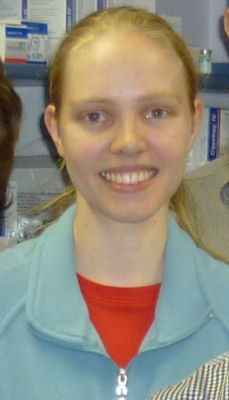
Catherine Luyt, a doctoral student in the Faculty of Pharmacy under the Environmental Health and Biotechnology Research Group headed by Dr Roman Tandlich, presented some of her PhD research at the 4th International Online Medical Conference and was awarded a prize for the best presentation on Day 1.
The paper explores the shortage of skilled personnel available to monitor microbial water quality around South Africa. This leads to a lack of microbial data which is needed to make public health decisions about drinking water quality.
Luyt's aim was to evaluate a combination of two low-cost tests as a potential tool for microbial monitoring and detection of water infrastructural and treatment problems in South Africa. To this end, opportunistic sampling of water from various municipal regions was conducted for the H2S strip test and the heterotrophic plate count (HPC) analyses between June 2008 and February 2010.
While the results indicated no public health risks in the Matlosana City, the Fochville and the eThekwini Municipalities, 28% of the Makana Municipality drinking water samples were found to be faecally contaminated. The HPC concentrations ranged from 5 to greater than 1500 CFU/mL.
When the tests were combined the results correctly indicated that insufficient treatment, microbial re-growth and/or pipe bursts were the likely sources of contamination. Worryingly, the implementation of a monitoring programme involving the Makana municipal officials, the authors and the community volunteers, has so far been dysfunctional due to insufficient involvement by municipal officials.
In the context of Luyt's paper, it was confirmed that the two tests provide a valuable tool for drinking water quality monitoring in South Africa.
Luyt's research paper is timely. Inadequate microbial quality of drinking water, and low standards of sanitation, rank among the leading causes of disease in Africa (WHO, 2002). The National Department of Water Affairs (DWA) operates the National Microbial Monitoring Programme (NMMP) for surface water and groundwater. Yet in South Africa, drinking water is often unreliable due to water-treatment works being incorrectly or insufficiently operated, forcing communities to turn to other water resources, often faecally contaminated in excess of DWA drinking water standards. As treatment at the household level is both expensive and time-consuming, the circumstances are ripe for the occurrence of waterborne diseases.
Luyt's report makes for sobering reading. There are 278 tertiary catchments in South Africa, but financial and logistical limitations make it impossible to sample every single catchment in the context of the NMMPs. Only areas at high risk of faecal contamination are sampled, and so large parts of South Africa are excluded from the regular microbial water quality monitoring.
In addition, there are insufficient accredited laboratories to perform the necessary analyses in provinces of the Eastern Cape, Northern Cape, and Mpumalanga (SANAS, 2011), leading to irregular monitoring of microbial quality for drinking water, or complete lack thereof in parts of South Africa.
Luyt's research shows that use of the H2S strip test and the heterotrophic plate count (HPC) holds promise and may assist the municipal health services to be able to carry out fast, low-cost and simple monitoring, even in remote areas. Her 4th International Online Medical Conference presentation was rated by the conference panel as 'very good' and 'professional'.
Luyt’s presentation was one of the best four presentations (as each day had one best presentation and there were 4 days) of the conference. In addition, her full length paper has been accepted for publication in the scientific journal HealthMed, which earns a subsidy from DOHET.
